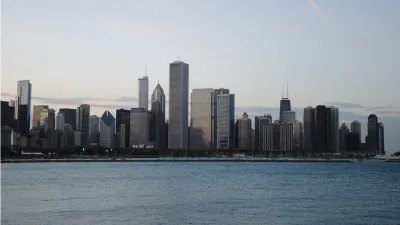Big cities saw the sharpest population declines during the pandemic. Is the trend here to stay?

With so much attention focused on the so-called exodus from big cities caused by the pandemic, research shows that "most big cities with populations exceeding 250,000 showed lower population growth in the year the pandemic began than in the previous year, and nearly one-third of them registered their lowest annual growth in the decade," writes William H. Frey for the Brookings Institution. "Still, only a few of these cities—mostly the nation’s largest—showed sharp population losses during the year COVID-19 began. Many of the others either continued population losses or slower gains that emerged earlier in the 2010s decade—or registered growth rises."
Big cities, by far, saw the greatest losses in population as people sought more affordable housing in outlying suburbs, helped along by the growing opportunities for remote work. This trend existed before the pandemic, but "large cities especially showed exceptionally slow or negative growth during the pandemic year."
"The most recent year’s city growth declines gave further impetus to the suburban growth advantage that took root midway in the 2010s decade. Earlier in that decade, a unique phenomenon emerged: a growth advantage for cities over their surrounding suburbs." But this short-lived advantage, "much of it attributable to the impact of the 2007-09 Great Recession and down housing market, which 'stranded' many young adult millennials in urban centers," has yielded back to the "broader suburbanization patterns that have been at work in most major metropolitan areas since the middle of the 2010s decade."
Whether or not the growth slowdowns precipitated by COVID-19 continue, writes Frey, "it is important to place them in the context of a 'shock' to an ongoing system of selective population dispersion that was established several years before the pandemic began—one that new generations of young adult movers may or may not choose to follow."
FULL STORY: America’s largest cities saw the sharpest population losses during the pandemic, new census data shows

National Parks Layoffs Will Cause Communities to Lose Billions
Thousands of essential park workers were laid off this week, just before the busy spring break season.

Retro-silient?: America’s First “Eco-burb,” The Woodlands Turns 50
A master-planned community north of Houston offers lessons on green infrastructure and resilient design, but falls short of its founder’s lofty affordability and walkability goals.

Delivering for America Plan Will Downgrade Mail Service in at Least 49.5 Percent of Zip Codes
Republican and Democrat lawmakers criticize the plan for its disproportionate negative impact on rural communities.

Test News Post 1
This is a summary

Test News Headline 46
Test for the image on the front page.

Balancing Bombs and Butterflies: How the National Guard Protects a Rare Species
The National Guard at Fort Indiantown Gap uses GIS technology and land management strategies to balance military training with conservation efforts, ensuring the survival of the rare eastern regal fritillary butterfly.
Urban Design for Planners 1: Software Tools
This six-course series explores essential urban design concepts using open source software and equips planners with the tools they need to participate fully in the urban design process.
Planning for Universal Design
Learn the tools for implementing Universal Design in planning regulations.
EMC Planning Group, Inc.
Planetizen
Planetizen
Mpact (formerly Rail~Volution)
Great Falls Development Authority, Inc.
HUDs Office of Policy Development and Research
NYU Wagner Graduate School of Public Service



























